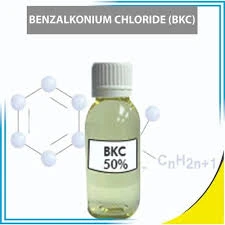polycarboxylic
Understanding Polycarboxylic Compounds An Overview
Polycarboxylic compounds are organic molecules characterized by the presence of multiple carboxylic acid functional groups (-COOH). These compounds play pivotal roles in various industrial applications due to their unique chemical properties. This article delves into the significance, types, and applications of polycarboxylic compounds.
At the molecular level, a carboxylic acid features a carbon atom bonded to both a hydroxyl group (-OH) and a carbonyl group (C=O). In polycarboxylic compounds, multiple carboxyl groups are present, which can significantly influence their behavior and reactivity. The number of carboxylic groups contributes to the acidity of the compound, as well as its ability to form hydrogen bonds and engage in various chemical reactions.
One of the most common polycarboxylic compounds is citric acid, a naturally occurring organic acid found in citrus fruits. Citric acid contains three carboxylic groups, which contribute to its sour taste and its effectiveness as a natural preservative. Other notable examples include oxalic acid, which has two carboxyl groups, and malonic acid, which also features two. These compounds find extensive use in various sectors, including pharmaceuticals, agriculture, and food processing.
In industrial settings, polycarboxylic acids are vital in the production of polymers and surfactants. For instance, polyacrylic acid, which contains multiple carboxylic groups, is widely used in superabsorbent materials, coatings, and adhesives. Its ability to absorb large amounts of water makes it indispensable in products like diapers and feminine hygiene products.
polycarboxylic

In the agriculture sector, polycarboxylic compounds are utilized as chelating agents. These substances can bind metal ions, enhancing nutrient availability in soil and improving plant growth. Additionally, they are involved in developing fertilizers that increase crop yield while minimizing environmental impact.
The versatility of polycarboxylic compounds extends to their role as additives in various formulations. In the food industry, they act as acidity regulators, preservatives, and flavor enhancers. For instance, adipic acid is commonly used in food processing for its properties as a flavoring agent and acidity regulator.
While polycarboxylic compounds are highly beneficial, it is essential to manage their use and disposal carefully. Some may exhibit toxic properties or pose environmental concerns if not handled appropriately. Research in the field of green chemistry is increasingly focusing on creating eco-friendly polycarboxylic compounds that maintain performance while reducing environmental impact.
In conclusion, polycarboxylic compounds are integral to numerous applications across various industries. Their unique chemical structure, characterized by multiple carboxylic acid groups, contributes to their diverse functionalities. From enhancing agricultural productivity to shaping the future of sustainable materials, the significance of polycarboxylic compounds continues to grow, underscoring the importance of ongoing research and development in this field. As we advance our understanding and applications of these compounds, we pave the way for innovative solutions to contemporary challenges in health, industry, and environmental management.
-
Understanding Polycarboxylic Acids: Properties, Applications, and Future PotentialNewsJul.28,2025
-
Scale Inhibitor Explained: How to Protect Your System from Limescale and Hard Water DamageNewsJul.28,2025
-
Scale and Corrosion Inhibitors: Essential Chemicals for Industrial Water System ProtectionNewsJul.28,2025
-
Polyaspartic Acid: A Biodegradable Polymer for Sustainable ChemistryNewsJul.28,2025
-
Isothiazolinones: A Versatile Antimicrobial Class with Industrial Power and Regulatory ChallengesNewsJul.28,2025
-
A Deep Dive into 2-Phosphonobutane-1,2,4-Tricarboxylic Acid (PBTC)NewsJul.28,2025





